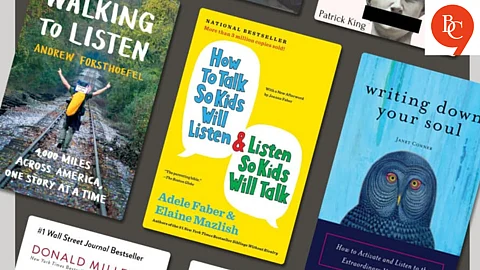

And guess what? The journey to becoming an effective communicator can begin with something as simple and magical as a book.
Here’s a curated list of books—ranging from picture books to early chapter reads—that are designed to gently nudge children towards better communication, empathy, and emotional intelligence.
1. “How to Talk So Kids Will Listen & Listen So Kids Will Talk” by Adele Faber & Elaine Mazlish (Adapted Version for Kids)
A classic guide for parents has now been adapted into versions suitable for children and tweens. This book introduces young readers to essential communication techniques—like active listening, expressing feelings with “I” statements, and resolving conflicts without yelling or shutting down.
Why it helps: It breaks down tricky interpersonal moments into relatable scenarios and gives kids actual phrases and tools they can use. Think of it as communication training in story form.
2. “Giraffes Can’t Dance” by Giles Andreae
This beloved picture book follows Gerald the giraffe, who feels out of place because he can't dance like the others. Through vibrant illustrations and lyrical text, it encourages kids to embrace their individuality and find their own rhythm—literally and metaphorically.
Why it helps: It teaches kids that being different isn’t wrong—and that confidence comes from self-acceptance and encouragement, both vital for healthy communication.
3. “The Rabbit Listened” by Cori Doerrfeld
This emotionally resonant picture book follows a young child named Taylor, who experiences something upsetting. A parade of animals offers advice—yelling, fixing, distracting—but only the rabbit quietly listens.
Why it helps: It introduces the importance of empathetic listening—a core skill in communication. This book gently shows children (and adults) how just being present can be powerful.
4. “My Mouth Is a Volcano!” by Julia Cook
Louis, the main character, interrupts constantly—his words “erupting” like a volcano. This humorous and relatable book helps children understand the importance of taking turns while talking and how to manage their thoughts and impulses.
Why it helps: It's perfect for kids who are still learning self-regulation. The playful storytelling makes an abstract skill like impulse control both accessible and engaging.
5. “What If Everybody Did That?” by Ellen Javernick
Through everyday scenarios, this book explores the consequences of inconsiderate or disruptive behavior, prompting kids to think before they speak or act. It’s a fun, eye-opening read with real-world implications.
Why it helps: It fosters social awareness and reminds kids that their words and actions impact others, laying the groundwork for thoughtful communication.
6. “Say Something!” by Peter H. Reynolds
This vibrant, affirming book encourages children to find and use their voice. Whether it's speaking up against bullying or sharing creative ideas, it empowers kids to communicate with courage and kindness.
Why it helps: It's especially helpful for quieter or introverted children who may need encouragement to express themselves.
7. “I Can’t Believe You Said That!” by Julia Cook
Another gem by Julia Cook, this book tackles the issue of blurting out inappropriate comments. The story helps children understand social filters, empathy, and respectful communication in everyday situations.
Why it helps: It balances humor with valuable lessons on choosing the right words and reading social cues—skills every young communicator needs.
Building communication skills isn’t just about speaking well; it’s about listening, empathizing, pausing, and thinking before responding. The books we give our children shape how they understand the world—and themselves.
